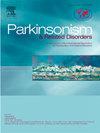阿波啡管理支持:如何最好地促进阿波啡的适当使用?
IF 3.4
3区 医学
Q2 CLINICAL NEUROLOGY
引用次数: 0
摘要
帕金森病(PD)是一种以运动和非运动功能进行性恶化为特征的慢性神经退行性疾病。在晚期,患者通常会出现运动波动,包括严重影响生活质量的不可预测的“关闭”发作。阿波啡,一种有效的多巴胺受体激动剂,皮下注射——间歇注射或持续输注——在这些发作中提供快速有效的缓解。尽管具有治疗价值,但由于认识有限、起始复杂性、不良反应管理以及需要专门的基础设施等障碍,阿帕吗啡仍未得到充分利用。这篇综述概述了目前关于优化阿帕吗啡在PD中使用所需的支持系统的知识。提出了一个结构化的三阶段模型——预启动、启动和维护——来指导最佳实践。我们描述了关键利益相关者的角色,包括多学科医疗团队、护理人员、制药服务提供商和患者倡导组织。神经科医生和帕金森病护理专家(PDNS)是治疗协调的核心,而物理治疗师、职业治疗师、语言病理学家和精神卫生专业人员提供必要的补充护理。当得到充分的信息和支持时,护理人员在促进依从性和情绪稳定方面发挥着关键作用。制药公司提供教育材料、技术援助、家庭护理资源和财政支持机制。患者组织通过同伴教育和情感强化做出贡献。未来的发展方向包括增强训练模式、更广泛的远程医疗集成和设备创新。需要一个协调的、以患者为中心的方法来确保晚期PD患者持续、公平地获得阿帕吗啡。本文章由计算机程序翻译,如有差异,请以英文原文为准。
Supports available for apomorphine management: How best to facilitate appropriate usage of apomorphine?
Parkinson's disease (PD) is a chronic neurodegenerative disorder marked by progressive deterioration in both motor and non-motor function. In advanced stages, patients commonly experience motor fluctuations, including unpredictable “off” episodes that severely affect quality of life. Apomorphine, a potent dopamine receptor agonist administered subcutaneously—either as intermittent injections or continuous infusion—offers rapid and effective relief during these episodes. Despite its therapeutic value, apomorphine remains underutilized due to barriers such as limited awareness, initiation complexity, adverse effect management, and the need for specialized infrastructure.
This review outlines current knowledge regarding support systems necessary for optimizing apomorphine use in PD. A structured, three-stage model—pre-initiation, initiation, and maintenance—is proposed to guide best practices. We describe the roles of key stakeholders, including multidisciplinary healthcare teams, caregivers, pharmaceutical service providers, and patient advocacy organizations. Neurologists and Parkinson's Disease Nurse Specialists (PDNS) are central to treatment coordination, while physiotherapists, occupational therapists, speech-language pathologists, and mental health professionals provide essential complementary care. When adequately informed and supported, caregivers play a critical role in promoting adherence and emotional stability. Pharmaceutical companies offer educational materials, technical assistance, home care resources, and financial support mechanisms. Patient organizations contribute through peer education and emotional reinforcement. Future directions include enhanced training models, broader telemedicine integration, and device innovation. A coordinated, patient-centered approach is needed to ensure sustained, equitable access to apomorphine for individuals living with advanced PD.
求助全文
通过发布文献求助,成功后即可免费获取论文全文。
去求助
来源期刊

Parkinsonism & related disorders
医学-临床神经学
CiteScore
6.20
自引率
4.90%
发文量
292
审稿时长
39 days
期刊介绍:
Parkinsonism & Related Disorders publishes the results of basic and clinical research contributing to the understanding, diagnosis and treatment of all neurodegenerative syndromes in which Parkinsonism, Essential Tremor or related movement disorders may be a feature. Regular features will include: Review Articles, Point of View articles, Full-length Articles, Short Communications, Case Reports and Letter to the Editor.
 求助内容:
求助内容: 应助结果提醒方式:
应助结果提醒方式:


